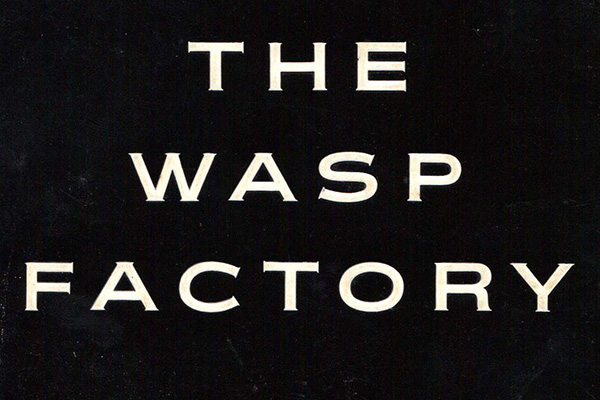The Wasp Factory
By Iain Banks
We are gathered here today to talk about Iain Bank’s first-published novel, The Wasp Factory. If you suffer from the aforementioned debilitating genre disease, then for your own safety it is best for me to call The Wasp Factory a horror novel. I don’t quite like naming a novel’s genre, solely because of all the people out there willing to debate the “actual” genre of a pink-clad Harlequin, but yeah, we’ll go with horror. Unfortunately, it is a horror novel that would fail to horrify a horror fan, because what this story really consists of is that which absolutely has to be a novelty act: the freak-show. The protagonist is a mentally ill sixteen-year-old named Frank Cauldhame, who lives on an island with his father and occupies his time by performing strange rituals involving the extensive torture and gruesome death of various animals. He also occasionally goes drinking with a dwarf, because of course he does.
Now, the abuse of animals upsets me about as much as the next not-horribly-broken-inside person, but only in real life. Frith knows you are going to have to do more than light random imaginary rabbits on fire to get me appalled, and the titular wasp factory seems little more than a joke. It isn’t a factory that makes wasps, because that would be interesting; it’s merely a system of killing wasps that Frank uses to tell the future. If my heart ain’t bleeding for the bunnies, it’s not about to beat for wasps.
Maybe when this book was published, in 1984, all of this was shocking and outrageous (I wouldn’t know; the eighties were part of that “not born yet” phase I was going through), but now it seems to me a bit “so what?” I made an effort, but I’m unable to be deeply disturbed by the thought that somewhere out there a whackjob on some island might be being cruel to animals. I kind of knew that already. The Wasp Factory ultimately fails for me because the narrative really wants you to gawk at the weirdo, and although Frank possesses an original voice, he doesn’t have much going for him I haven’t seen before.
This is also very much a first novel. There’s some incredibly forced irony that I found jarring, enough so that I nearly sprung the big plot twist solely because of it. The moment where Frank compares his so-called wasp factory to the human condition is just so belaboured it was hard to read without eye-rolling (which is not conductive to reading). Yet, despite all that, The Wasp Factory does have its strengths as a narrative. It makes an effort to be interesting, the plot twist is pretty twisted, and there is a central image of horror quite nauseating enough to stay with me forever. Still, if you want to read the work of Iain Master of Science Banks, I would recommend starting elsewhere.



